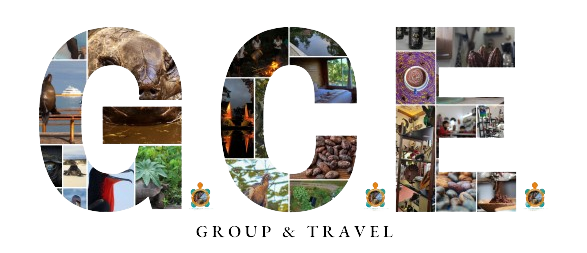
Quito’s Capariches: Anonymous Guardians of Cleanliness and Memory
Located at 2,850 meters above sea level, in the historic center of Quito, the capital of Ecuador, there existed a character forgotten by many, but of great importance to the cultural memory of Quiteños: the capariche. Although today their figure usually appears in traditional festivals wearing red ponchos (A poncho is a traditional outer garment made from a single piece of fabric with a hole in the center for the head, often worn to protect from the cold or rain) and colorful masks, their origin is rooted in struggle, discrimination, forced labor, and even spiritual meaning. Come along and discover the story of these people who, without saying a word, said so much.
The word capariche has its native root in the Kichwa word kaparina, which means “to shout” or “to raise your voice loudly.” During the colonial period, the Spanish used this word negatively to refer at the Indigenous people who worked in harsh and noisy conditions. Over time, this word was common to refer to the people who cleaned the city, especially in Quito.
Between the 17th and 19th centuries, the Capariches were free Indigenous people who did not belong to any colonial estate or encomienda system. However, they were still required to pay taxes to the colonial government.
As part of this obligation, they had to perform unpaid public labor—most commonly sweeping the city streets once or twice a week. This work was not compensated with money; instead, it served as a form of tribute to the ruling system of the time.
Historical records show that these individuals were descendants of the Zámbiza ethnic group, original inhabitants of the Guangüiltagua plateau (now in northern Quito). In addition to sweeping, they were also responsible for the general sanitation of Quito, which included garbage collection, maintenance of water channels, and cleaning of historic plazas such as Plaza de la Independencia in the city center and Plaza de San Francisco, one of the earliest colonial settlements in Quito.
Beyond the physical labor, the work of the capariche held a profound spiritual meaning: the act of sweeping was interpreted as cleansing the impurities of one’s soul. This symbolic religious interpretation connected with both Indigenous and Catholic beliefs, turning the labor into one of the purest examples of syncretism between Spanish and Quiteño culture. Can you imagine that?
This work, infused with the essence of Quito, began to disappear in the early 20th century. By 1930, there were no longer capariches in charge of cleaning the city with the best-preserved historic center in South America. However, their figure still survives today in traditional festivals like San Pedro and San Pablo, especially in neighborhoods with strong Indigenous identity such as La Comuna, El Condado, Nayón, Calderón, and Zámbiza, all located in the northern part of Quito.
They parade through the streets accompanied by music, dance, and community spirit, transforming the memory of labor into a celebration of identity and resilience. Showing that our sense of sanctity begins with cleansing from within—cleansing our way of being to improve our quality of life.
The Quiteño composer Manuel María Espín Freire, author of many traditional sanjuanitos, a popular genre of music in Ecuador, dedicated a song to them that still echoes during the San Pedro and San Pablo festivals:
I’m the capariche who rises early to work
With my wheelbarrow and broom I go like this
I sweep the streets without feeling pain
When morning breaks with the dawn,
I go happily to my little home
Carrying in my heart a lifetime
For my lovely longuita.
The forgetfulness surrounding the capariches is partly due to the lack of official information about them. Although they still live on in dance and in the oral memory of our elders, they are not featured in conventional history books or school curricula. That’s why, even while conducting this research, I myself had never heard of these famous legends. Had you?
But today, the capariches are more than a symbol of labor: they represent dignity, Indigenous resistance, and love for Quito. To remember them is an act of historical justice, and to recreate them in the capital’s traditional festivals not only keeps the tradition alive but also reclaims their rightful place in Quito’s history.
So, have you ever seen this character during popular festivals like Inti Raymi? Would you like to know how to recognize them?
You’re more than welcome to take a closer look the next time you see them dancing in their colorful ponchos, carved masks, and brooms in hand to the vibrant rhythm of the sanjuanitos. Know that you’re not just watching a dance: you’re witnessing an ancestral tradition pulsing through the streets of Quito. Because these capariches are not decorative figures or folklore performers; they are ancient heartbeats disguised as celebration, living threads that weave together Quito’s identity and show the world a city that doesn’t just preserve its history—it dances it.
By: JC




